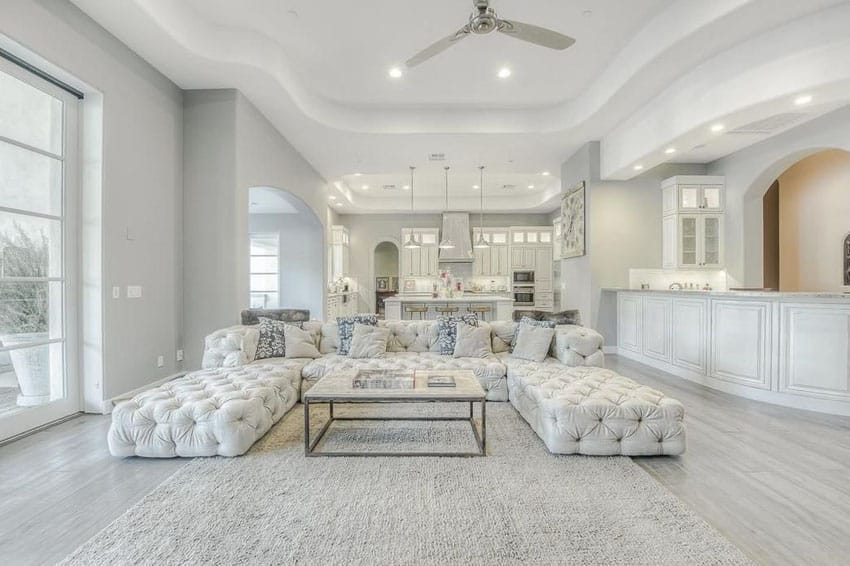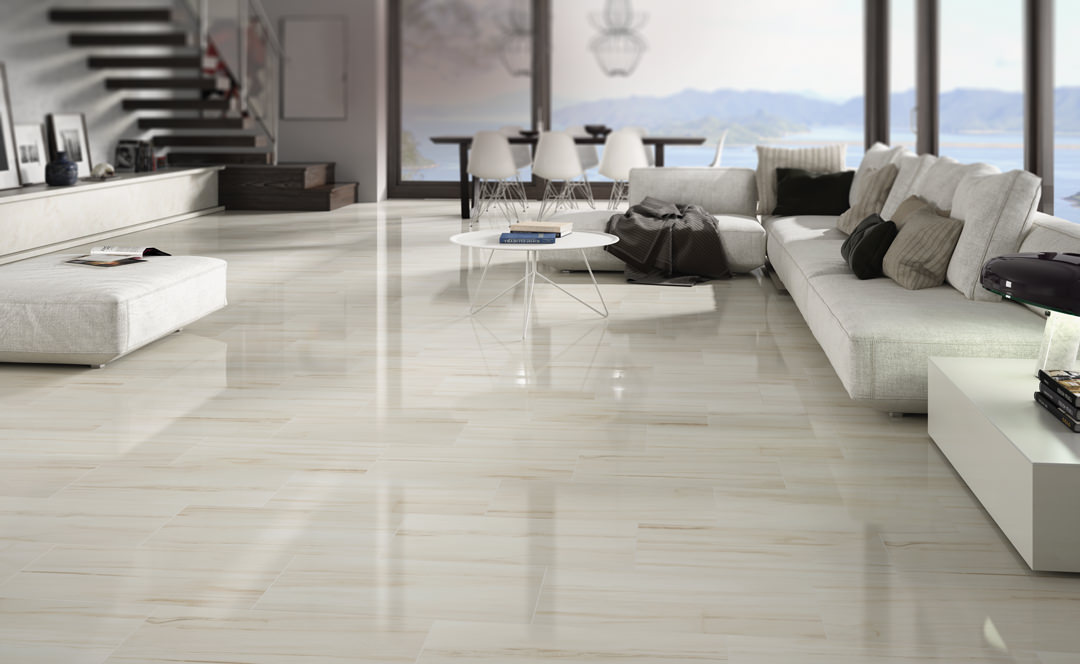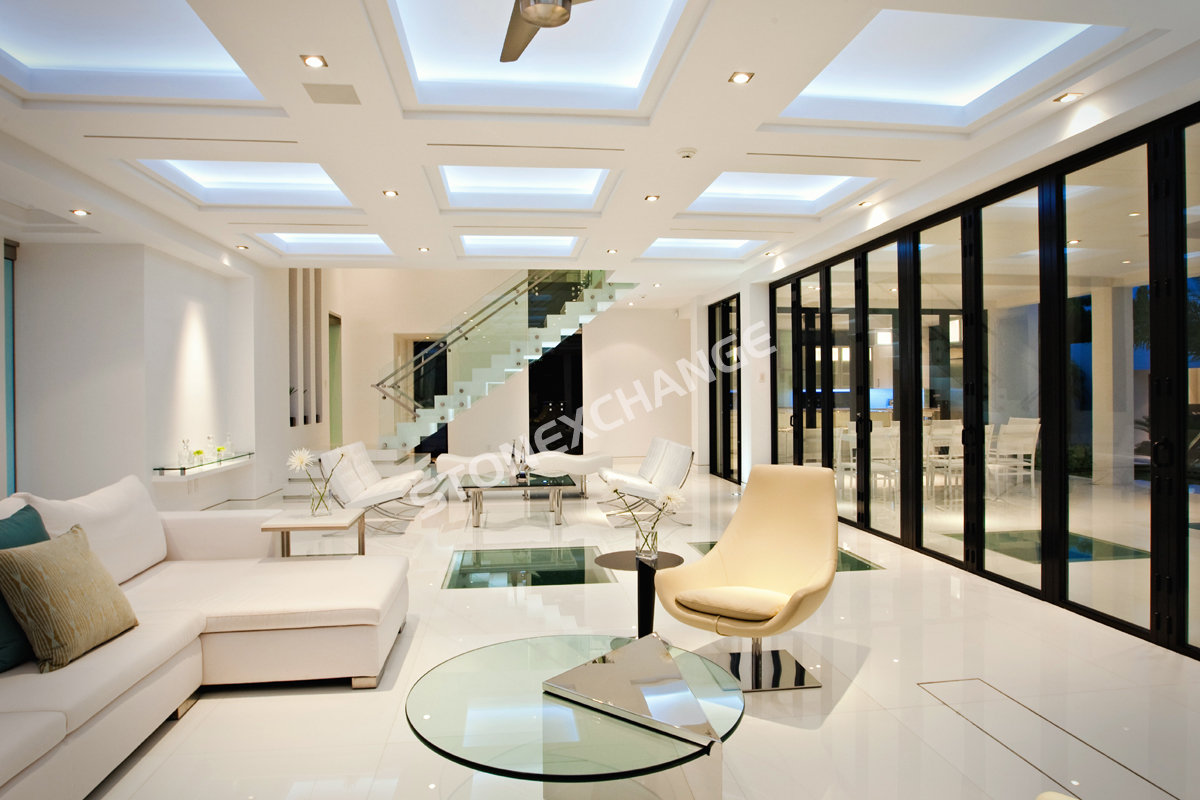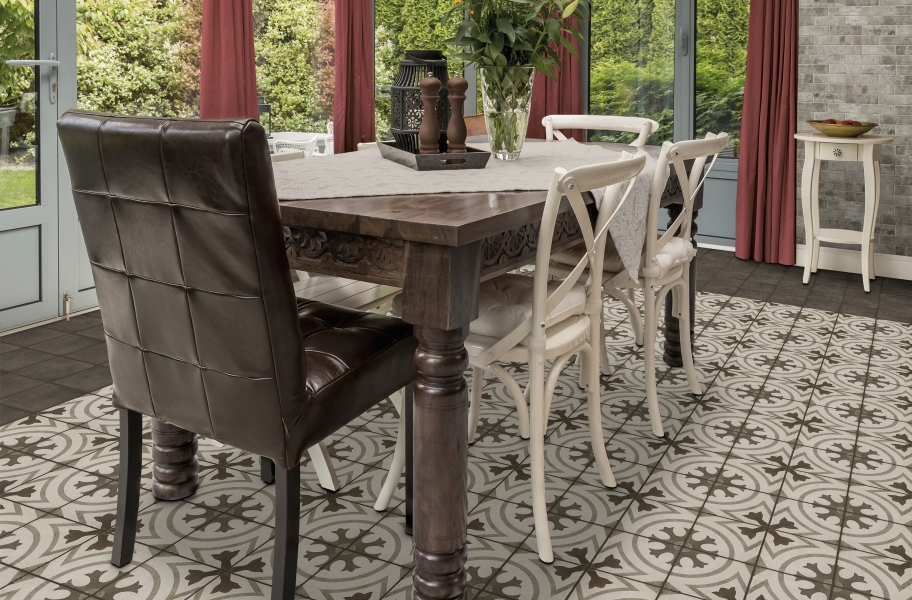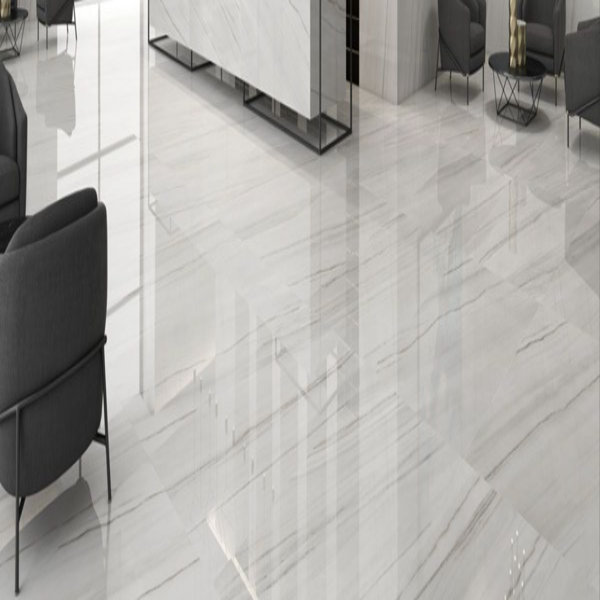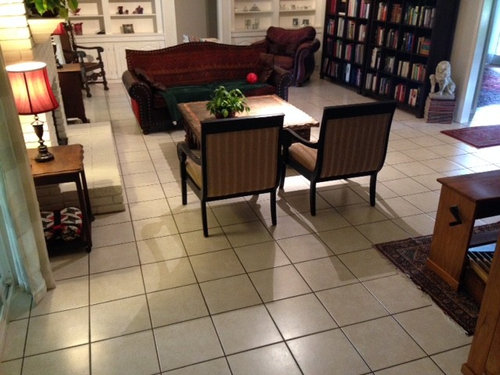Choosing the Right Furniture for Tile Floors
When it comes to furnishing your home with tile floors, it’s essential to choose furniture that not only complements your style but also protects your floors from scratches and damage. Let me guide you through the process of selecting the right furniture for tile floors, ensuring a harmonious and durable living environment.
- Consider Furniture with Protective Features: Investing in furniture with protective features can significantly reduce the risk of scratches and damage to your tile floors. Look for pieces that have felt or rubber pads on the bottom of the legs, as these materials provide a cushioning effect and prevent direct contact with the hard surface of the tiles. Additionally, furniture with wheels or casters can make it easier to move around without causing friction against the floor.
- Opt for Furniture with Soft Edges: Sharp-edged furniture can be a nightmare for tile floors, as accidental bumps can lead to unsightly scratches. Choose furniture with rounded or soft edges to minimize the risk of damage. Sofas with curved armrests, coffee tables with smoothed corners, and chairs with padded armrests are excellent choices that not only protect your floors but also add a touch of elegance to your living space.
- Consider Lightweight Furniture: Heavy furniture can exert immense pressure on tile floors, causing cracks or indentations over time. Opting for lightweight furniture can help alleviate this issue. Look for materials like aluminum, acrylic, or lightweight wood options when selecting tables, chairs, and other pieces. Not only will this protect your floors, but it will also make rearranging your furniture a breeze.
- Avoid Furniture with Metal or Sharp Elements: Furniture with metal or sharp elements can pose a significant risk to tile floors. Metal chair legs, for example, can easily scratch or chip the surface if not properly protected. Be cautious when selecting furniture with sharp decorative elements, such as metal accents or exposed nails. Opt for designs that prioritize smooth surfaces and materials, like fabric or leather, that won’t harm your floors.
- Regular Maintenance: Even with the right furniture, regular maintenance is crucial to preserving the condition of your tile floors. Clean and sweep regularly to remove dirt and debris that can cause scratches. Use furniture pads or coasters under heavy items to distribute weight evenly and prevent indentations. By following these maintenance practices, you can keep your tile floors looking their best for years to come.

Furniture Options That Complement Tile Flooring
When it comes to furnishing your home with tile floors, finding furniture that not only complements the flooring but also enhances the overall aesthetic can be a delightful challenge. Let’s explore stylish and practical furniture options that perfectly complement tile flooring, creating a harmonious and visually appealing living space.
- Minimalist and Modern: For contemporary tile floors, consider minimalist and modern furniture options. Clean lines, sleek designs, and neutral colors like white, black, or gray can create a seamless and sophisticated look. Look for furniture pieces with metal or chrome accents, as they add a touch of modernity and complement the reflective surface of tile floors.
- Warm and Wooden: To add warmth and a touch of nature to your tile floors, consider wooden furniture options. Whether it’s a solid oak dining table, a rustic wooden coffee table, or a set of wooden chairs, the natural textures and warm tones of wood can beautifully contrast with the coolness of the tiles. Opt for furniture with a matte finish to prevent any potential slipping on the smooth surface.
- Chic and Upholstered: Upholstered furniture can bring comfort, elegance, and a pop of color to your tile floors. Consider a plush sofa with vibrant cushions, a set of upholstered dining chairs, or a cozy armchair in a statement fabric. The softness and texture of upholstery create a welcoming atmosphere and help break the visual monotony of tiled floors.
- Versatile and Modular: If you love rearranging your furniture frequently, consider modular options that can adapt to different room layouts. Modular furniture, such as sectional sofas or modular shelving units, allows you to create unique configurations that suit your space and style. Look for pieces with neutral colors and versatile designs to ensure they complement your tile floors seamlessly.
- Statement Pieces: To create a focal point in your room and showcase your tile flooring, consider adding a statement furniture piece. This could be an eye-catching designer chair, an artistic coffee table, or an intricately designed console table. A well-placed statement piece not only adds personality but also draws attention to the beauty of your tile floors.
Protecting Your Tile Floors: Furniture Pads and Protectors
When it comes to preserving the beauty and longevity of your tile floors, it’s essential to take proactive measures to protect them from the potential damage caused by furniture. Below are the best furniture pads and protectors to safeguard your tile floors, ensuring they remain in pristine condition for years to come.
Felt Pads: Felt pads are an excellent choice for protecting tile floors from scratches and dents. These pads, typically made from wool or synthetic fibers, adhere to the bottom of furniture legs and create a soft barrier between the furniture and the floor. They are easy to install and provide a cushioning effect that prevents direct contact and friction, minimizing the risk of damage.
Rubber or Silicone Pads: Rubber or silicone pads are another popular option for protecting tile floors. These pads are known for their durability and slip-resistant properties, making them ideal for furniture that tends to move or slide. They provide a firm grip on the floor and absorb shock, reducing the impact of heavy furniture on the tiles. Additionally, rubber or silicone pads are moisture-resistant, making them suitable for areas prone to spills or humidity.
Adhesive-Backed Protectors: Adhesive-backed protectors are versatile and easy to use. These protectors come in various forms, such as clear discs or strips, and are designed to stick to the bottom of furniture legs. They create a protective barrier that prevents scratches and marks on your tile floors. Adhesive-backed protectors are suitable for both hard and soft surfaces and can be easily replaced or removed when needed.
Caster Cups: If your furniture has wheels or casters, consider using caster cups to protect your tile floors. Caster cups are small, concave-shaped cups that fit under the wheels or casters, distributing the weight evenly and preventing indentations or damage. They are available in different materials, including rubber, plastic, or metal, and can be selected based on your specific needs and preferences.
Area Rugs and Floor Mats: In high-traffic areas or under heavy furniture, consider using area rugs or floor mats to provide an extra layer of protection. These not only protect your tile floors from scratches but also add warmth and style to your space. Opt for rugs or mats with non-slip backings to ensure they stay in place and don’t pose a tripping hazard.
Cleaning and Maintaining Furniture on Tile Floors
Proper cleaning and maintenance of furniture on tile floors are essential to keep your home looking its best. Let’s discuss effective tips and tricks for cleaning and maintaining furniture on tile floors, ensuring a sparkling and well-maintained living environment.
Regular Dusting and Sweeping: Regular dusting and sweeping are essential to prevent dirt and debris from accumulating on your tile floors and furniture. Use a soft microfiber cloth or a dust mop to remove dust and loose particles from the surface of your furniture. For tile floors, a broom or a vacuum with a hard floor attachment can effectively remove dirt and debris from the cracks and crevices.
Avoid Harsh Chemicals: When cleaning your furniture and tile floors, it’s important to avoid using harsh chemicals that can damage the surfaces. Opt for mild, pH-neutral cleaning solutions or natural alternatives like vinegar and water. These gentle cleaning agents effectively remove dirt without causing any harm to your furniture or tile floors.
Spot Cleaning: For spills or stains on your furniture or tile floors, it’s crucial to address them promptly to prevent permanent damage. Blot the spill with a clean cloth or paper towel, avoiding any rubbing or scrubbing that can spread the stain. Use a mild cleaning solution specifically formulated for the type of surface you are cleaning. Test the solution on a small, inconspicuous area first to ensure it doesn’t cause any discoloration or damage.
Protecting Against Sun Damage: Direct sunlight can cause fading and discoloration of both furniture and tile floors. To protect against sun damage, consider using curtains, blinds, or window films to filter the sunlight and prevent UV rays from reaching your furniture and floors. Additionally, rotating and repositioning your furniture periodically can help distribute the effects of sunlight more evenly.
Regular Maintenance of Furniture: Regular maintenance of your furniture is essential to keep it in good condition and prolong its lifespan. Follow the manufacturer’s instructions for cleaning and care, and address any loose screws, wobbly legs, or damaged parts promptly. By maintaining your furniture properly, you can prevent further damage that may affect your tile floors.
Professional Cleaning: For deep cleaning and restoration of your tile floors and furniture, consider hiring professional cleaning services. Professional cleaners have the expertise and equipment to effectively remove stubborn stains, deep-seated dirt, and grime, leaving your furniture and tile floors looking refreshed and revitalized.
Furniture Arrangement Ideas to Showcase Your Tile Flooring
Proper furniture arrangement can significantly enhance the aesthetics of your tile flooring. Let’s explore various furniture arrangement ideas to showcase your tile flooring, creating a visually appealing and harmonious living space.
Highlight the Centerpiece: If you have a stunning tile flooring design or a focal point in your room, arrange your furniture in a way that highlights and complements it. For example, if you have a beautiful mosaic tile pattern, arrange your furniture in a circular or square formation around the center of the room, drawing attention to the intricate design.
Create Conversation Areas: Arrange your furniture to create cozy conversation areas that encourage interaction and engagement. Place sofas and chairs facing each other, with a coffee table or ottoman in the center. This arrangement not only facilitates conversation but also allows the tile flooring to act as a backdrop, showcasing its beauty.
Utilize Open Space: If you have a spacious room with ample open space, consider arranging your furniture to create distinct zones. For example, you can create a reading nook by placing a comfortable armchair and a small side table near a window, allowing natural light to highlight both the furniture and the tile floor. By utilizing the open space effectively, you can showcase different areas of your room while maintaining a cohesive design.
Symmetry and Balance: Symmetrical furniture arrangements can create a sense of balance and harmony in your space. Place identical furniture pieces, such as two armchairs or two side tables, on either side of a central point, such as a fireplace or a large window. This symmetrical arrangement not only adds visual appeal but also allows the tile flooring to be the focal point.
Mix and Match: For a more eclectic and personalized look, consider mixing and matching different furniture styles and materials. Combine modern furniture with vintage pieces, or mix wood and metal for an interesting contrast. This eclectic arrangement can create visual interest and allow your tile flooring to shine as a backdrop for the diverse furniture pieces.
Showcase Art and Décor: Utilize your furniture arrangement to showcase art and décor pieces that complement your tile flooring. Place a statement artwork above a sofa or a console table, or display decorative items on floating shelves against a tiled accent wall. By strategically incorporating art and décor, you not only enhance the aesthetics of your space but also draw attention to the beauty of your tile flooring.
Living Rooms with Tile Flooring (Photos) – Home Stratosphere
Protecting Your Marble Floor From Heavy Furniture Nalboor
Black and White Floors That Make A Statement Architectural Digest
Tile Flooring Trends: Contemporary Tile Ideas – Flooring Inc
Best White tile floors ideas – white tiles
Kingsley 24″ x 48″ Floor u0026 Wall Tile
Need help with endless white tile floors
Related Posts:
